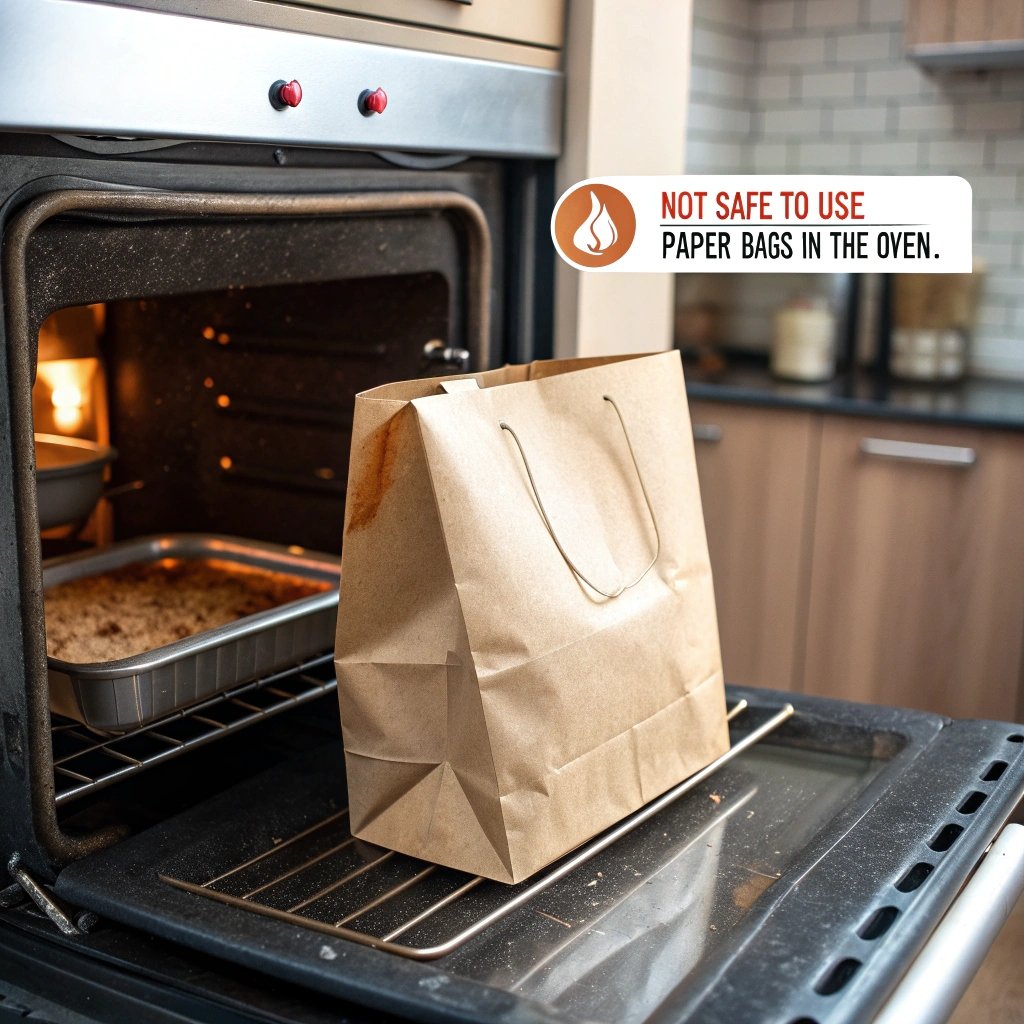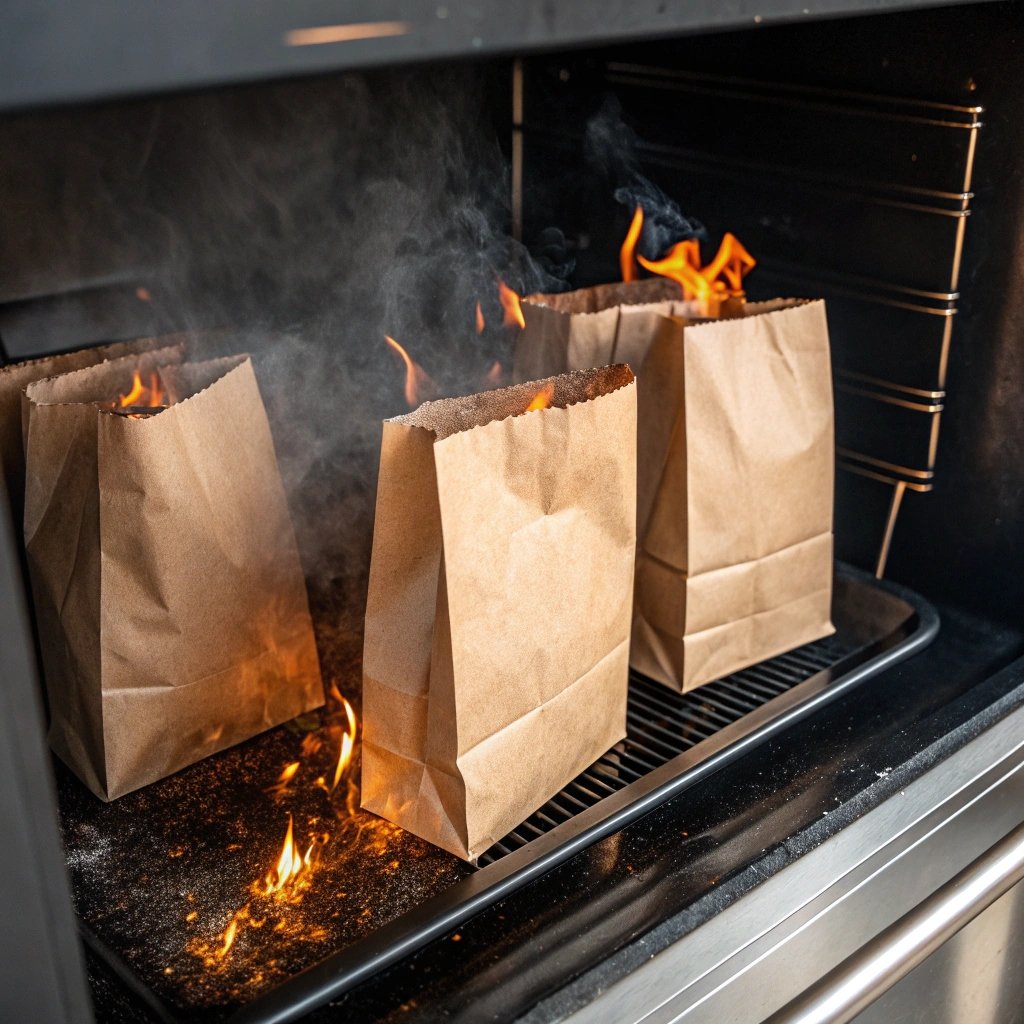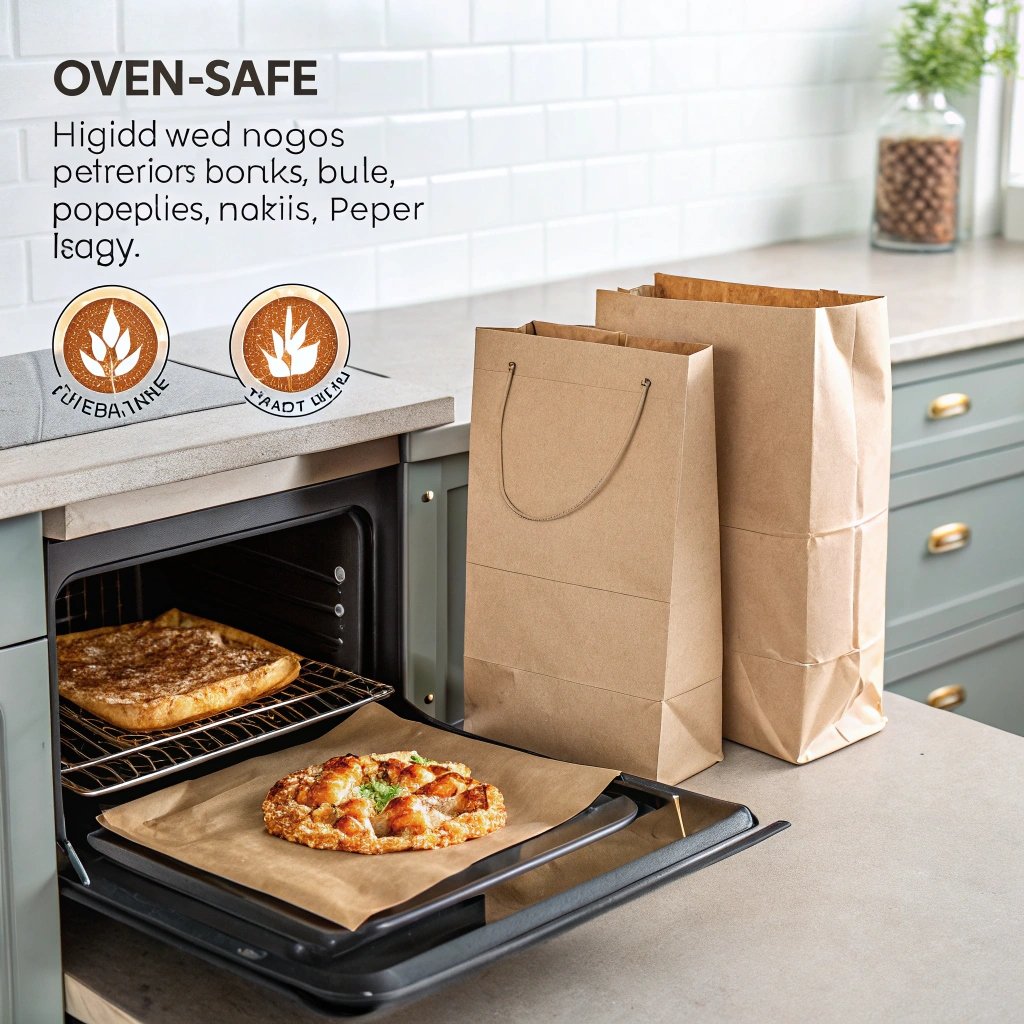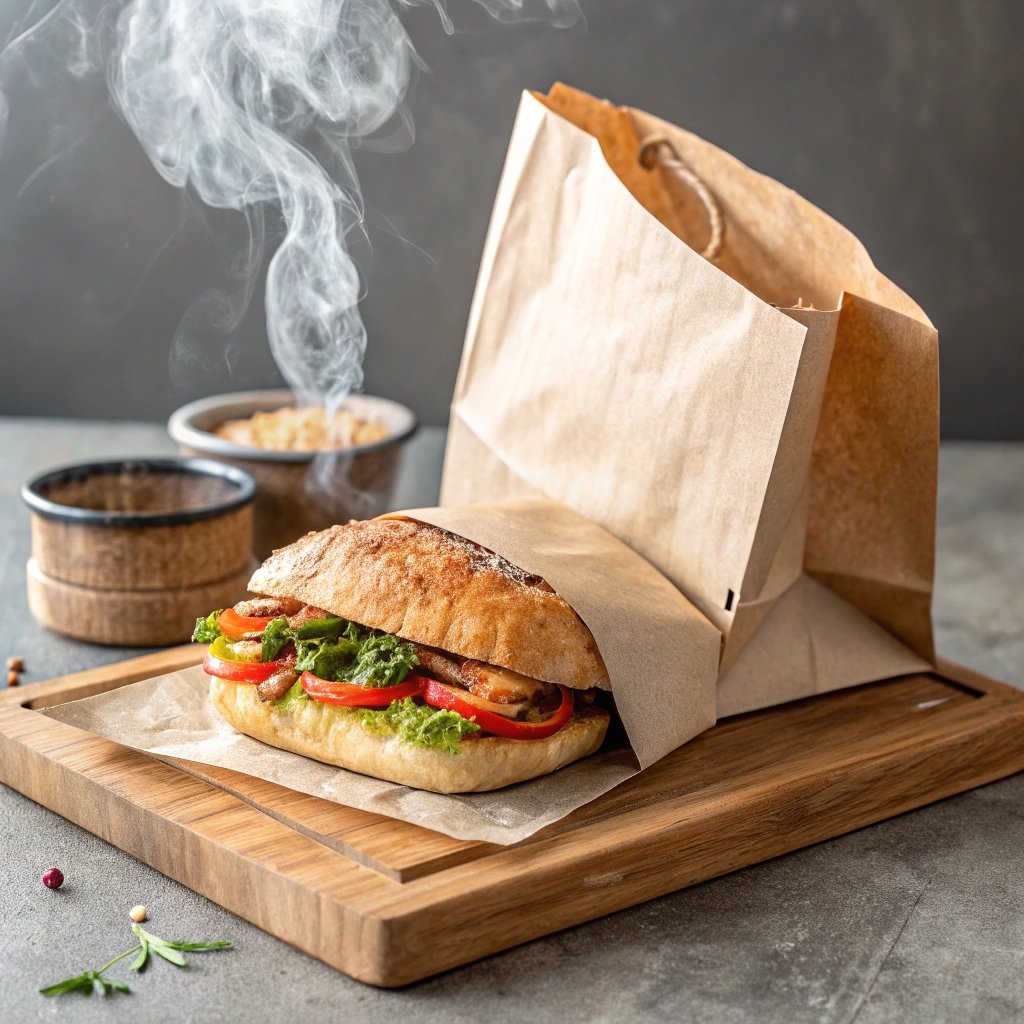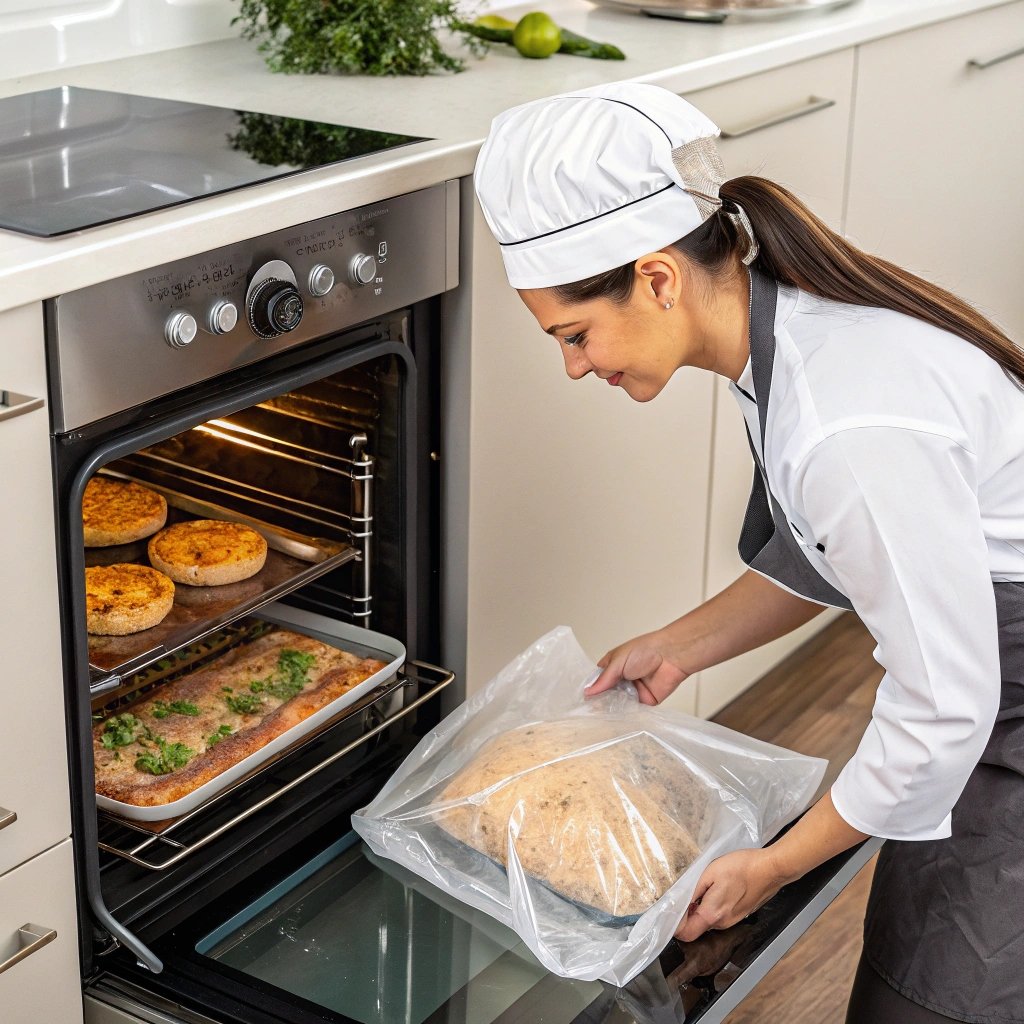Problem: Many people wonder if it’s safe to put a paper bag in the oven. After all, paper seems flammable, so is it really okay to use in such a high-heat environment?
While paper bags are convenient, they aren’t all suitable for oven use. Let’s dive into the safety concerns and alternatives.
If you're curious about whether paper bags are safe for baking or reheating food in the oven, continue reading to discover the facts, tips, and alternatives for safe cooking in your kitchen.
Is it safe to put a paper bag in the oven?
Problem: You might have heard of using paper bags in the oven for roasting or baking, but is it really safe?
Paper bags can catch fire in the oven1 due to their flammable nature, making them dangerous for cooking in most cases.
Understanding the Risks
Most paper bags, especially the ones we use for groceries, are made from kraft paper1 or recycled materials. These types of paper are not designed for high-heat environments like ovens. When exposed to temperatures over 350°F (about 175°C), paper can begin to smolder, burn, or even catch fire. When heated in the oven, paper bags are highly vulnerable to combustion, especially when placed too close to heat sources like heating elements or the oven walls.
When a paper bag is subjected to heat, it can begin to break down, and if it’s not treated or manufactured specifically for high temperatures, it will catch fire after a certain point. The risk of the bag igniting increases if the paper has been coated with inks, dyes, or waxes, as these chemicals are flammable and can release toxic fumes.
This is particularly dangerous because most ovens can reach temperatures between 400°F (200°C) and 500°F (260°C), far exceeding the safe tolerance levels of standard paper. As such, paper bags are not a safe or reliable option for oven cooking unless they are specifically designed to withstand heat.
The Flammability of Paper Bags
To understand why paper bags are flammable, it's important to know a bit about the material itself. Paper is a fibrous material derived from plant cellulose, and while it’s not inherently dangerous, it becomes highly flammable when exposed to heat. The thinner the paper, the more susceptible it is to fire.
Moreover, paper bags often have printed logos or advertisements, and those inks are typically made from petroleum-based compounds. When exposed to heat, these chemicals can combust, releasing harmful fumes or even contributing to the fire hazard. In addition, paper bags used in food packaging (such as takeout bags) may contain other additives or coatings to enhance durability or aesthetics, but these coatings might increase the risk of fire or cause the bag to melt when exposed to high heat.
What Should You Use Instead of Paper Bags in the Oven?
If you want to cook or bake with a bag, there are plenty of alternatives designed to handle the heat of the oven. These include parchment paper2, silicone baking bags, and heat-safe plastic oven bags. Let’s take a look at some oven-safe options:
-
Parchment Paper: A great alternative for wrapping food, parchment paper can handle temperatures up to 450°F (about 230°C). It helps keep moisture in while preventing the food from sticking to baking sheets or pans.
-
Silicone Bags: These are durable, heat-resistant bags that can be used in ovens. Silicone is non-stick, reusable, and safe for cooking temperatures up to 500°F (260°C).
-
Oven-Safe Plastic Bags: Made from high-temperature-resistant plastics such as polyethylene or nylon, these bags are ideal for roasting meats or vegetables. They generally tolerate temperatures of 400°F (200°C) without risk of melting.
-
Aluminum Foil Bags: Used in roasting, these bags can safely withstand very high temperatures (up to 600°F or 315°C). However, they do not allow food to breathe as parchment paper does, so they are better suited for certain types of cooking.
By choosing the right materials for your cooking needs, you can enjoy safe and effective oven use.
Safety Tips for Using Paper Bags in the Oven
- Always check for oven-safe labels: If you must use paper bags, ensure that they are specifically labeled as “oven-safe.” These bags are often treated with heat-resistant coatings to prevent combustion.
- Keep bags away from direct heat sources: Avoid letting your paper bag come in contact with the oven's heating elements or walls. It should always be placed on a flat, oven-safe surface such as a baking tray.
- Do not overload: If you’re using a bag in the oven, avoid stuffing it too full. A tightly packed bag is more likely to burst or catch fire if it comes into contact with heat.
- Do not use recycled or untreated paper: Only use paper bags that are designed for oven use and have been tested for heat resistance. Recycled paper or untreated bags are a fire hazard.
What kind of bags can go in the oven?
Problem: Not all bags are created equal, and many people mistakenly assume any bag can go in the oven without thinking about the materials.
Oven-safe bags[^3] are made from materials specifically designed to withstand high temperatures, unlike regular paper bags.
Types of Bags That Can Be Used in the Oven
When considering oven bags, the material plays a huge role in determining whether or not it is safe. Some materials, such as certain plastics and papers, are designed specifically for use in high temperatures, while others, like regular paper, can be dangerous. Below are some common bags that can go in the oven, as well as the materials that make them oven-safe.
-
Parchment Paper Bags: Parchment paper is a type of heat-resistant paper that is often treated with silicone, making it safe for use in the oven. These bags are designed to withstand temperatures up to 450°F (about 230°C), which makes them great for baking, roasting, and cooking. Parchment paper bags are often used for baking fish or chicken, as they help keep the food moist while allowing it to brown and cook evenly.
-
Silicone Baking Bags: Silicone is an incredibly heat-resistant material that can typically withstand temperatures up to 500°F (260°C). Silicone bags are great for high-heat cooking, and they are durable, reusable, and flexible. They are commonly used for baking, steaming, and roasting food in the oven. Silicone is non-stick, which means your food won’t stick to the bag, and it also helps to trap moisture, keeping your food tender.
-
Oven Bags (Plastic): Oven bags made of nylon or polyethylene are designed to withstand temperatures up to 400°F (about 200°C). These bags are typically used for roasting meats and vegetables. They help retain moisture while cooking, preventing the food from drying out and resulting in more tender and flavorful dishes. These bags are commonly used for roasting large cuts of meat, such as turkey or chicken.
-
Aluminum Foil Bags: These bags can withstand extremely high temperatures—up to 600°F (315°C). However, they are not the best for baking, as they don’t allow food to breathe and can prevent proper browning.
Key Considerations When Using Oven-Safe Bags
When selecting a bag for oven use, always check the manufacturer’s guidelines. Make sure the bag is specifically labeled as oven-safe and review the maximum temperature it can withstand. It’s also important to use these bags correctly, such as ensuring they are placed on a baking sheet to prevent direct contact with heat sources.
Can I heat up food in a paper bag?
Problem: Sometimes we have leftover food that we want to heat up quickly, and the thought of using a paper bag seems convenient. But is this safe?
Heating food in a paper bag is not recommended unless you are using a bag specifically designed for high temperatures.
The Dangers of Heating Food in Paper Bags
Paper bags are generally not designed for heating food, as they do not have the necessary properties to withstand heat without igniting or releasing harmful chemicals. While they are fine for transporting food from one place to another, heating food in a paper bag can be dangerous.
Most paper bags, especially those used by fast-food restaurants or grocery stores, are made from recycled paper or kraft paper and have no heat-resistant coatings or treatments. When you attempt to heat food in such bags, the paper will begin to break down, and depending on the heat, it may catch fire or release toxins.
Additionally, paper bags are not airtight, which means that they don’t provide the necessary environment to cook or reheat food properly. They don’t trap moisture, which means your food can dry out or burn. Also, because paper is porous, food particles can leak out, causing a mess in your oven.
When Is It Safe to Use Paper Bags for Heating?
If you want to heat food in a paper bag, be sure it’s one that’s specifically labeled as safe for that purpose. Certain fast-food chains and takeout establishments use specially treated paper bags that can handle higher temperatures in the microwave or oven. However, this is not the case for regular paper bags you get at the grocery store.
Alternatives to Paper Bags for Heating
- Microwave-safe Containers: Glass or ceramic containers are microwave-safe and can be used to heat food in a microwave or even in an oven.
- Parchment Paper: Parchment paper is a safe option for wrapping food to be heated in the oven. It can withstand high temperatures and doesn’t release harmful fumes.
- Silicone or Oven Bags: These materials are heat-resistant and can handle the temperatures required for reheating food in the oven without the risk of fire or chemical release.
What is the temperature limit for oven bags?
Problem: When using oven-safe bags, it’s important to know the temperature limits so you can avoid overheating and creating a safety hazard.
The temperature limit for oven bags depends on the material, but most oven-safe bags can withstand temperatures ranging from 400°F to 500°F (about 200°C to 260°C).
Understanding Oven Bag Temperature Limits
Knowing the temperature limit for each type of bag you use is essential to avoid potential accidents. Some bags are specifically designed for high temperatures, while others may only tolerate lower heat levels. Always check the manufacturer’s guidelines for the recommended maximum temperature.
-
Parchment Paper Bags: These bags are safe for use in temperatures up to 450°F (230°C). They are perfect for baking and roasting, and because they are made from heat-resistant paper, they help keep moisture in and allow your food to brown.
-
Plastic Oven Bags: Typically made from nylon or polyethylene, plastic oven bags are designed to withstand temperatures up to 400°F (200°C). They are ideal for slow-roasting meats and keeping moisture locked in while cooking.
-
Silicone Bags: Silicone is highly heat-resistant and can handle temperatures up to 500°F (260°C). Silicone bags are great for high-heat cooking, such as roasting or baking, and are easy to clean for repeated use.
-
Aluminum Foil Bags: These bags can withstand extremely high temperatures—up to 600°F (315°C). However, they are not the best for baking, as they don’t allow food to breathe and can prevent proper browning.
Table: Temperature Limits for Common Oven Bags
| Type of Bag | Maximum Temperature | Common Uses |
|---|---|---|
| Parchment Paper Bags | 450°F (230°C) | Baking, roasting, and wrapping food |
| Silicone Baking Bags | 500°F (260°C) | High-heat roasting and baking |
| Plastic Oven Bags | 400°F (200°C) | Roasting meats, poultry, vegetables |
| Aluminum Foil Bags | 600°F (315°C) | Roasting and high-heat cooking |
Conclusion
Oven-safe bags are great tools for cooking, but it’s essential to understand their limits and select the right type for your needs. Paper bags are not suitable for high-heat cooking unless they are specifically designed for it, so always check for heat-resistant alternatives to ensure safe and effective cooking.

